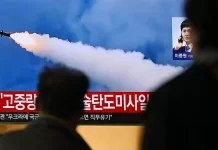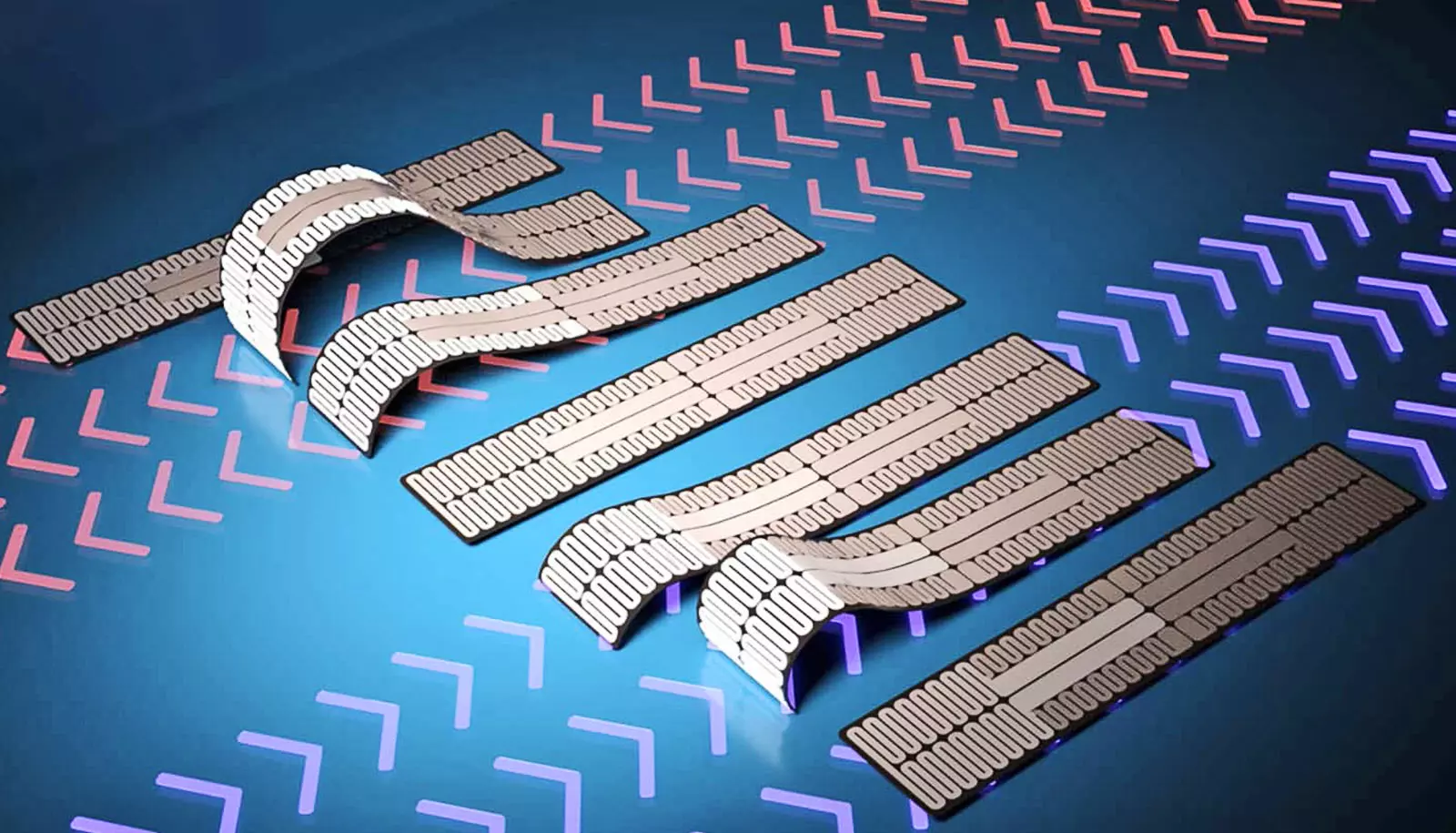TECH AND INNOVATION
This energy efficient robot can crawl like a caterpillar
Mar 31, 2023
This article is published in collaboration with
Futurity
A pattern of silver nanowires use heat to control the way the robot bends.
Image: NC State/Futurity
Matt Shipman
Research Communications Lead, University Communications, NC State University
Share:
OUR IMPACT
What’s the World Economic Forum doing to accelerate action on Tech and Innovation?
THE BIG PICTURE
Explore and monitor how Energy Transition is affecting economies, industries and global issues
CROWDSOURCE INNOVATION
Get involved with our crowdsourced digital platform to deliver impact at scale
Stay up to date:
Tech and Innovation
Scientists in North Carolina have created a bi-directional soft robot inspired by the movement of a caterpillar.
This article from the research institution explains the thinking behind the caterpillar-bot and the basics of its mechanics.
In future, the team plans to integrate sensor technology with the hope the robot could be used in search and rescue situations.
Researchers have demonstrated a caterpillar-like soft robot that can move forward, backward, and dip under narrow spaces.
The caterpillar-bot’s movement is driven by a novel pattern of silver nanowires that use heat to control the way the robot bends, allowing users to steer the robot in either direction.
“A caterpillar’s movement is controlled by local curvature of its body—its body curves differently when it pulls itself forward than it does when it pushes itself backward,” says Yong Zhu, professor of mechanical and aerospace engineering at North Carolina State University and corresponding author of a paper on the work.
“We’ve drawn inspiration from the caterpillar’s biomechanics to mimic that local curvature, and use nanowire heaters to control similar curvature and movement in the caterpillar-bot.
“Engineering soft robots that can move in two different directions is a significant challenge in soft robotics,” Zhu says.
“The embedded nanowire heaters allow us to control the movement of the robot in two ways. We can control which sections of the robot bend by controlling the pattern of heating in the soft robot. And we can control the extent to which those sections bend by controlling the amount of heat being applied.”
The caterpillar-bot consists of two layers of polymer, which respond differently when exposed to heat. The bottom layer shrinks, or contracts, when exposed to heat. The top layer expands when exposed to heat. A pattern of silver nanowires is embedded in the expanding layer of polymer. The pattern includes multiple lead points where researchers can apply an electric current. The researchers can control which sections of the nanowire pattern heat up by applying an electric current to different lead points, and can control the amount of heat by applying more or less current.
“We demonstrated that the caterpillar-bot is capable of pulling itself forward and pushing itself backward,” says postdoctoral researcher Shuang Wu, first author of the paper.
“In general, the more current we applied, the faster it would move in either direction. However, we found that there was an optimal cycle, which gave the polymer time to cool—effectively allowing the ‘muscle’ to relax before contracting again. If we tried to cycle the caterpillar-bot too quickly, the body did not have time to ‘relax’ before contracting again, which impaired its movement.”
Have you read?
This new method could help us find energy-efficient materials faster
How can robots and AI make offshore energy more sustainable?
Green Growth – innovating with new and energy-efficient solutions
The researchers also demonstrated that the caterpillar-bot’s movement could be controlled to the point where users were able steer it under a very low gap—similar to guiding the robot to slip under a door. In essence, the researchers could control both forward and backward motion as well as how high the robot bent upwards at any point in that process.
“This approach to driving motion in a soft robot is highly energy efficient, and we’re interested in exploring ways that we could make this process even more efficient,” Zhu says.
“Additional next steps include integrating this approach to soft robot locomotion with sensors or other technologies for use in various applications—such as search-and-rescue devices.”
The paper appears in Science Advances.
Support for the work came from the National Science Foundation and the National Institutes of Health.
Source: NC State
Don’t miss any update on this topic
Create a free account and access your personalized content collection with our latest publications and analyses.
License and Republishing
World Economic Forum articles may be republished in accordance with the Creative Commons Attribution-NonCommercial-NoDerivatives 4.0 International Public License, and in accordance with our Terms of Use.
The views expressed in this article are those of the author alone and not the World Economic Forum.
Related topics:

































